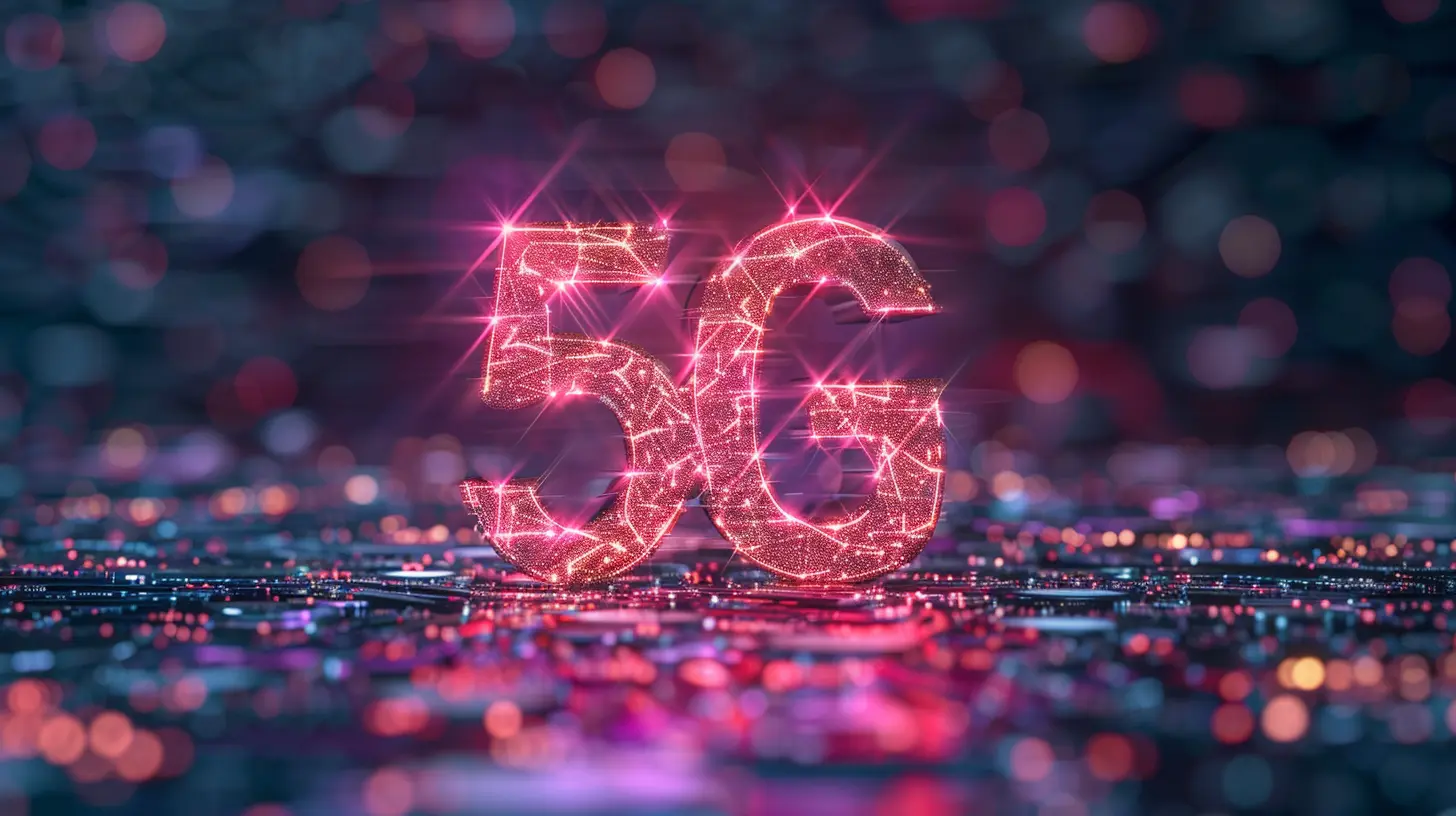G and Its Role in the Evolution of Edge Computing
24 November 2025
The world of technology is constantly evolving, and two of the most exciting advancements in recent years are 5G and edge computing. These two innovations are reshaping the way we think about data processing, connectivity, and the future of the internet. But what exactly is the relationship between 5G and edge computing? How do they work together to revolutionize the tech landscape? Let’s break it down, one byte at a time.

What Is 5G?
Okay, so let's start with the basics—what exactly is 5G? If you’re thinking it’s just “the next version of 4G,” you’re not wrong, but it’s so much more than that! 5G, which stands for "fifth-generation" wireless technology, is the latest leap in mobile networks. It's designed to deliver faster speeds, lower latency, and more reliable connections than its predecessors.To put it in perspective: remember when you upgraded from dial-up to broadband? That’s kind of what 5G feels like. But it’s not just about faster Netflix streaming—it’s about changing the entire ecosystem of connected devices. We’re talking smart cities, autonomous vehicles, remote healthcare, and, of course, edge computing.
Key Features of 5G
- Blazing Speeds: 5G can offer speeds up to 100 times faster than 4G. Imagine downloading a full HD movie in mere seconds!- Ultra-low Latency: This reduces the time it takes for data to travel from one point to another. It’s crucial for real-time applications like gaming, virtual reality (VR), and autonomous driving.
- Massive Device Connectivity: 5G can support up to a million devices per square kilometer. This is essential for the growing number of IoT (Internet of Things) devices, from smart refrigerators to industrial sensors.
Sounds pretty cool, right? But the speed and connectivity benefits of 5G aren’t just for your smartphone. This is where things get interesting—5G and edge computing together are a tech match made in heaven.

What Is Edge Computing?
Now, let’s talk about edge computing. If you’re not familiar, edge computing may sound like some futuristic, sci-fi concept, but it’s actually grounded in a very simple idea: processing data closer to where it’s generated, rather than sending it all the way to the cloud or some distant data center.In traditional cloud computing, data is sent to remote servers for processing. This works fine for most applications, but as we demand more from our technology—like real-time interactions and seamless experiences—waiting for data to travel back and forth just won’t cut it. Enter edge computing.
Benefits of Edge Computing
- Reduced Latency: By processing data closer to the source (i.e., on the "edge" of the network), we can reduce the time it takes for devices to send and receive information. This is crucial for things like autonomous vehicles, where even milliseconds matter.- Improved Data Privacy: Keeping data closer to its source also means it’s less likely to be intercepted or tampered with, improving security.
- Bandwidth Optimization: With edge computing, not all data needs to be sent to a central cloud. This reduces the amount of bandwidth required and helps avoid network congestion.
Think of it this way: imagine you’re ordering food delivery. Cloud computing is like sending your order to a restaurant across town, while edge computing is like having a food truck right outside your door. Which one’s going to get your food to you faster? Exactly.

How 5G Supercharges Edge Computing
Now that we’ve got a solid understanding of both 5G and edge computing, here’s where things get really exciting. When you combine the speed of 5G with the efficiency of edge computing, magic happens. Well, not literally, but it feels pretty close.Ultra-low Latency for Real-Time Applications
Remember how we said 5G has ultra-low latency? This is a game-changer for edge computing. Edge devices—whether they’re sensors, cameras, or machines—need to process information quickly. In industries like manufacturing or healthcare, real-time data processing is critical. Imagine a surgeon performing remote surgery using a robotic arm. The data needs to travel fast and be processed almost instantly. Any delay could be catastrophic.With 5G’s low latency, edge computing can handle these time-sensitive tasks with ease. It’s like the difference between having a conversation in the same room versus yelling across a football field. Clearly, the former is more efficient.
Supporting the Internet of Things (IoT)
The IoT is exploding, with everything from your smartwatch to your home thermostat connecting to the internet. But here’s the thing: all those devices are generating tons of data. Sending all that information to the cloud for processing just isn’t practical. That’s where edge computing steps in, processing data locally to reduce the load.Now, combine that with 5G’s ability to support massive device connectivity, and you’ve got a solution that can handle the growing number of IoT devices without breaking a sweat. It’s like having a super-efficient traffic system that keeps everything flowing smoothly, no matter how many cars are on the road.
Enhanced Reliability and Uptime
One of the biggest challenges for businesses relying on cloud-based infrastructure is downtime. If your connection to the cloud fails, your entire operation could grind to a halt. But with edge computing, data processing happens locally, so it’s not as affected by network outages. And when you add 5G’s reliable and stable connections into the mix, you’re looking at near-constant uptime.Think of it like having a backup generator for your house during a power outage. Even if something goes wrong with the main grid, you’ve still got power to keep things running.

Real-World Applications of 5G and Edge Computing
So, how is this dynamic duo of 5G and edge computing being used in the real world? Let’s dive into a few examples where these technologies are already making waves.Autonomous Vehicles
One of the most exciting applications is in autonomous vehicles. These cars rely on real-time data processing to make split-second decisions—whether it’s avoiding an obstacle or following traffic rules. With 5G’s low latency and edge computing’s ability to process data closer to the vehicle, self-driving cars can react faster and more efficiently.Imagine a car that can "think" as quickly as a human driver, but without the distractions. That’s the future 5G and edge computing are driving us towards—quite literally.
Smart Cities
Smart cities need to manage everything from traffic lights to waste collection more efficiently. With 5G and edge computing, cities can process data from thousands of sensors in real time. Traffic lights can adjust dynamically based on real-time traffic conditions, and waste collection routes can be optimized based on fill levels.It’s like giving a city a brain, allowing it to "think" and manage itself intelligently.
Healthcare
In healthcare, 5G and edge computing are enabling remote surgeries, real-time patient monitoring, and faster diagnostic tools. Imagine a doctor in New York performing surgery on a patient in Tokyo using robotic arms. The real-time data processing enabled by edge computing, combined with the ultra-fast speeds of 5G, makes this not only possible but safe and effective.It’s like having a doctor right there in the room, even if they’re halfway across the world.
Industrial Automation
From manufacturing to logistics, industries are using 5G and edge computing to automate processes and improve efficiency. Machines can communicate with each other and adjust their actions in real time, reducing downtime and improving productivity. Factories are becoming smarter, faster, and more efficient, all thanks to these technological advancements.It’s like having a factory that runs itself, constantly learning and improving as it goes.
The Future of 5G and Edge Computing
The future of 5G and edge computing is incredibly bright. As more devices connect to the internet and require real-time data processing, these technologies will become even more critical. We’re only scratching the surface of what’s possible. In the coming years, we’ll likely see breakthroughs in fields like virtual reality (VR), augmented reality (AR), and artificial intelligence (AI), all thanks to the combined power of 5G and edge computing.Imagine a world where AR glasses provide real-time information overlays as you walk down the street, or where VR gaming feels so immersive that you forget you’re even wearing a headset. These are just a few of the possibilities that are on the horizon.
Conclusion
5G and edge computing are two of the most transformative technologies of our time, and their combined potential is mind-blowing. While 5G provides the speed and connectivity we need, edge computing ensures that data is processed quickly and efficiently, right where it’s needed. Together, they’re paving the way for innovations that will change industries, improve lives, and create a more connected, intelligent world.So, the next time you hear about 5G, remember—it’s not just about faster internet for your phone. It’s about shaping the future of technology, one edge at a time.
all images in this post were generated using AI tools
Category:
5g TechnologyAuthor:

Reese McQuillan

